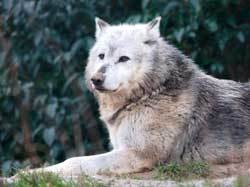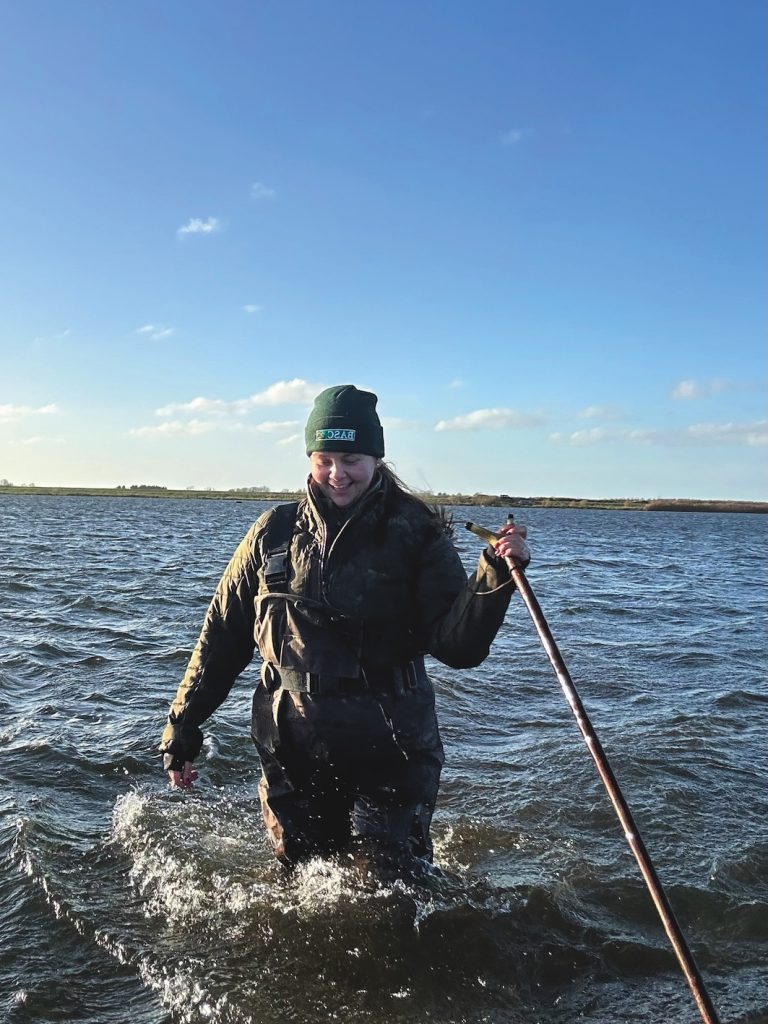Win CENS ProFlex DX5 earplugs worth £1,149 – enter here
Robin Page challenges the do gooders
Robin Page argues that the reintroduction of species long since extinct is a dangerous experiment - but will UK conservationists realise the perils before it is too late?

Robin Page debated with former RSPB Wales director Roger Lovegrove on the issues contained in this article during Thursday’s BBC Radio 4 Today programme. To listen to the debate click here
I did not expect to be writing about animal madness this month. I had wanted to write about a Norfolk man trying to save our wild songbirds, but other things intervened, convincing me that the world is going crazy and that some of the biggest threats to our diminishing wildlife continue to come not from hunters, farmers or gamekeepers ? as urban and BBC myth-makers would have us believe ? but from the Government and assorted conservationists themselves.
Suddenly I became aware of a number of schemes and appeals that seemed to arrive
from nowhere. Perhaps there is a hidden plan to turn 2007 into ?Barmy Conservationist Year?. First, a plan to reintroduce wolves ? a highly adaptable and intelligent predator destined to eat prime Scottish lambs and beef. Then a scheme to reintroduce the sea eagle to East Anglia, another predator. Let?s hope it finds the turkey sheds of Bernard Matthews. These were followed by various unsolicited leaflets through my letterbox; one from the RSPB praising all birds of prey and seeming to blame the demise of some on gameshooting, completely ignoring the fact, yet again, that the hen harrier, the sparrowhawk, the buzzard, the sea eagle and various others were under pressure well before gameshooting was invented. This is just a small point, I know, but perhaps some of the pamphlet designers ought to be encouraged to attend some simple history lessons.
Another pamphlet told me something I didn?t know. Apparently, badgers were still being persecuted and finding life hard; if this rubbish is true, why then is the badger population rising so quickly? Finally, an extraordinary sheet arrived from the Vegetarian and Vegan Foundation warning me about the dangers of milk:
So what is going on? At this point I have to declare an interest. Dr Tim Coulson of Imperial College, whose brain is behind the wolf introduction, is related to me. He is a cousin?s son. He is a good scientist, and even better company ? but Tim, why the wolf? It died out in 1769 for a reason and that reason still exists: domestic sheep and cattle. The plan is that wolves will control Scotland?s rampant red deer population ? but how do you tell them not to eat the eggs of dotterel, the chicks of hen harriers (one good point, then) and the poodles of visitors? I haven?t got a problem with living with wolves, they are beautiful creatures, but unfenced they are not practical. There is another point, however: why do conservationists and ordinary people want wolves? A deer?s death from wolves is long, slow and bloody. A deer?s death from staghunting is controlled, low-stress and humane ? so why has that been banned? Nature red in tooth and claw is fine, and when edited carefully makes wonderful Sunday evening television. Staghunting, in which the teeth and claws are avoided, is described as ?barbaric? and ?cruel?. Next time I see a wildebeest being eaten alive, I will ask how it likes it and whether it would like a Big Cat Diary DVD.
Then comes the story of sea eagles for East Anglia ? a barmy and unnatural scheme being master-minded by Natural England ? the quango that has replaced English Nature and which seems to be more interested in leisure and recreation than conservation. If Natural England had wanted to bring in a number of European bison to graze some of its reserves, that might be exciting ? European bison would not eat other species, only grasses. So why the sea eagle and whose idea was it anyway? Already I suspect that some conservationists have been reintroducing goshawks and buzzards illegally (surely a wildlife crime), but the sea eagle is a bit too big to bring in surreptitiously. The scheme is said to have attracted money from Anglian Water ? why? And the RSPB supports it ? confirming the RSPB?s adoration of all birds that eat other endangered birds. Of course, there never have been breeding sea eagles in East Anglia, making the venture an ?introduction?, not a “reintroduction?.
There are many myths concerning sea eagles. I am a fan of the birds; I visited the island of Rhum to see the first imported sea eagle chicks many years ago. The first myth is that they live on fish.They do eat fish, fresh and scavenged, but in Scotland they also take seabirds and lambs. It was their liking for lambs that led to their destruction. Birds of prey are lazy, opportunist hunters and so young seabirds are particularly vulnerable. Consequently, any sea eagle introduced to East Anglia will be looking out for the easy option ? that?s right ? lambs again, as well as grounded chicks, fat but not yet flying, pheasant poults, tern chicks, lapwing chicks and hopefully a few more visiting poodles. When I pointed out to a Natural England spokesman that Norfolk had some of the most important tern colonies in the country, he replied, ?We will release them in Suffolk, not Norfolk.? He had clearly forgotten that sea eagles have wings, that Norfolk is next to Suffolk and occasionally odd sea eagles visit East Anglia in winter, thought to have come from Central Europe, several hundred miles away.
More worryingly, Natural England?s reasons do not even seem to be based on conservation. An internal document says, A sea eagle reintroduction project represents a major opportunity for Natural England to lead a high-profile ?flagship species? project that will highlight the organisation at the forefront of a major biodiversity delivery initiative, delivering benefits to both people and nature. What tosh. It gets worse: There is a small risk of conflict with both socio-economic and nature conservation interests, but these would be effectively managed by risk assessment and contingency planning, and will be greatly outweighed by the positive impacts of the project. A thoroughly planned and well-executed public relations strategy will help to maximise the potential positive publicity and minimise adverse reactions. So it?s all about PR and not conservation.
Similarly, the return of the buzzard has all been about PR and I would love to hear any eyewitness accounts of buzzards taking live prey. The conservation myths report only scavenging. Funny, that: I have met people who have seen buzzards taking live lapwing chicks and leverets. Surely the British Trust for Ornithology (BTO), RSPB and Natural England have carried out research and know the full diet of the buzzard?
This brings us to badgers. According to the Badger Trust, Whenever badgers leave their underground sett, they face a hostile world. Badgers are persecuted by shooting, snaring, poisoning and vicious baiting with dogs? We train police officers to enforce the law when badgers are harmed. If this is correct, why are badger numbers soaring ? and why don?t police forces understand the law themselves? The fact is that badger numbers are so high that they are now seriously damaging other wild creatures and are one of the main predators of hedgehogs, as well as the eggs and young of lapwings, stone curlews and English partridge. I suspect that again the RSPB, BTO and Natural England have figures, but are sitting on them for the sake of political correctness.
Since I last mentioned the badger boom in this column, things have changed; slowly but surely the penny is dropping. Badgers are beautiful, wonderful animals, but there are too many of them. In his updated book on hedgehogs, The New Hedgehog Book, Professor Pat Morris shows clearly how badgers are putting hedgehogs at risk. This was confirmed recently by the Central Science Laboratory working for DEFRA. A letter to a farmer in Herefordshire stated that a hedgehog survey had been carried out: The results of the survey indicate that hedgehogs are fairly scarce, patchily distributed over the area, and found mainly in or on the edge of villages. In addition, when taking into account data collected throughout the Midlands and the south west of England, it was found that hedgehog abundance is negatively correlated to badger abundance.
Where global warming is concerned, governments have sat twiddling their thumbs for too long. On the subject of predation, the conservationists have been twiddling their thumbs too, as the countryside and many vulnerable species in it die. Because of this, it is vital that the subject of predators is talked about openly and discussed objectively. With this in view I am trying to organise a debate at The CLA Game Fair, to be continued at the British Birdwatching Fair, with votes taken after each debate. The motion would be: ?The British countryside is being killed though kindness.? I would like to argue that predation must be dealt with now, before it is too late, and I would be helped by the likes of Dick Potts, Chris Knights and Philip Merricks. Ideally, those in favour of the present predator mayhem would be Dr Mark Avery, of the RSPB, Bill Oddie and John Craven. Will they be prepared to argue their corner in public? We wait and see.
Related Articles
Get the latest news delivered direct to your door
Subscribe to Shooting Times & Country
Discover the ultimate companion for field sports enthusiasts with Shooting Times & Country Magazine, the UK’s leading weekly publication that has been at the forefront of shooting culture since 1882. Subscribers gain access to expert tips, comprehensive gear reviews, seasonal advice and a vibrant community of like-minded shooters.
Save on shop price when you subscribe with weekly issues featuring in-depth articles on gundog training, exclusive member offers and access to the digital back issue library. A Shooting Times & Country subscription is more than a magazine, don’t just read about the countryside; immerse yourself in its most authoritative and engaging publication.







